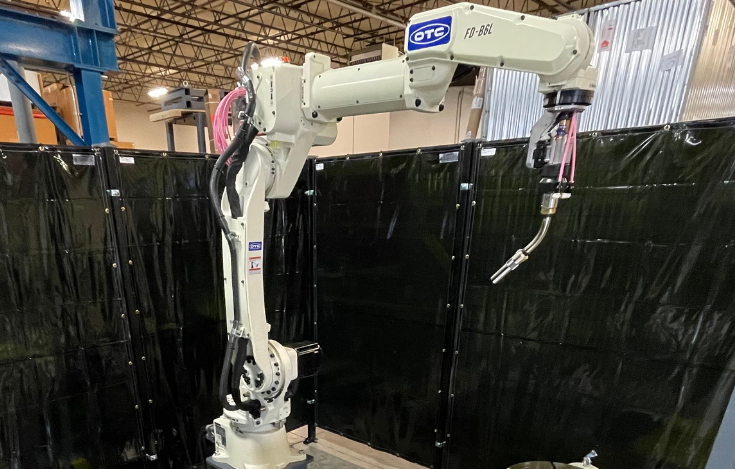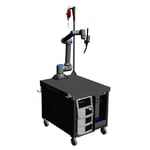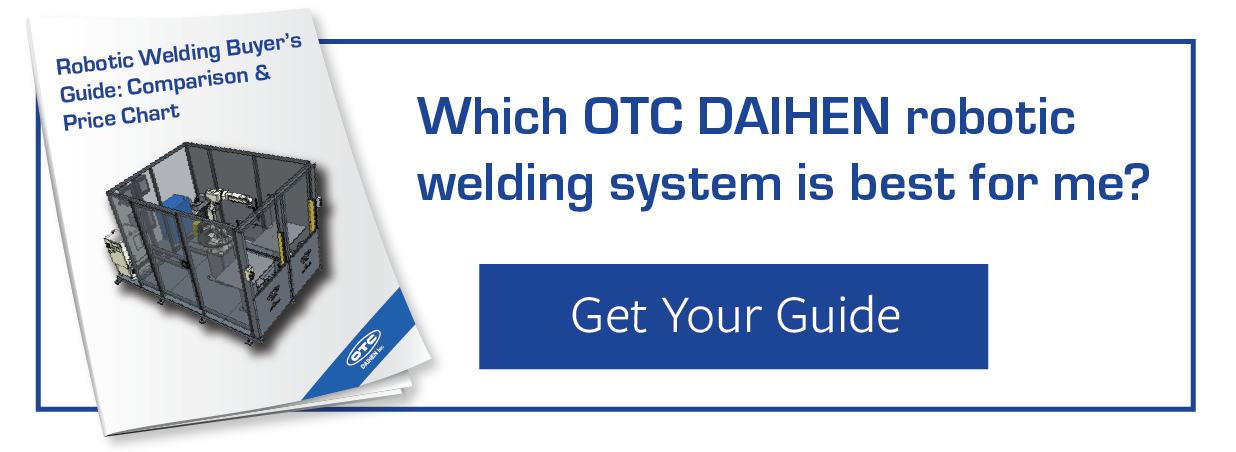
“A cobot welder is the answer to our production needs!”
Not so fast, our welding experts at OTC DAIHEN will tell you.
While collaborative robots have been a game-changing technology for various industries and applications, cobot welding introduces unique challenges that must be considered before you purchase.
A cobot welder, which combines a collaborative robot with a welder power source and a torch, is often thought of as an easy, less expensive way to automate welding than a production welding system.
However, many are not speaking out about the safety and production issues that are occurring with cobot welding - until now. In this article, we uncover the myths and speak the truth about cobot welding.
Myth: A Cobot Welder is Safe with No Guarding
A cobot welder is often promoted as safe, easy and efficient, with no guarding required. Roll it into position, supply the utilities, set up the fixture, start programming and go. No guarding is required. Because the robot stops if bumped, it’s considered safe.
Not so fast, we say.
The lack of protection due to no barriers means arc flash is a high safety concern. Arc flash can result in severe burns, loss of hearing and/or sight and other injuries.
Torch incidents are also a concern. The collaborative robot has a welding torch and protruding wire attached to the end. While the robot will stop if bumped, the torch and wire can easily cause serious injury, such as puncturing an operator’s hand.
Myth: A Cobot Welder is Easy to Program
You may think switching to a cobot welder will answer your struggles to hire skilled welders. Also, you can hire a lower-paid operator to run the cobot and save money!
Not so fast, we say.
An operator who is not a skilled welder will struggle to program the cobot with the correct welding parameters for high-quality welds. Weld quality is only as good as your programmer and the weld technology you choose - not the robot.
Many manufacturers are putting their skilled welders back on the cobot, a waste of the welder’s skill and higher pay.
Myth: With a Cobot Welder, No Skilled Labor Is Needed
Cobot welders are promoted for “ease-of-use” and a “reduced learning curve.” Any operators can run it, thereby, saving you the difficulties of finding skilled workers and saving you labor costs.
Not so fast, we say.
Lead-through teaching is very intuitive and easy to learn, however, this only applies to air moves. Welding path programming still requires a teach pendant to teach accurately due to the nature of a cobot.
As we mentioned above, manufacturers are finding that they do need a skilled welder on the cobot to program it, set torch angles, ensure proper wire diameters, etc.
They now end up “handcuffing” a skilled welder to the cobot welder for constant programming and operating, costing them money and the work that skilled welder could be doing elsewhere.
OTC DAIHEN Robotic Welding Buyer’s Guide
Avoid cobot challenges with our lineup of pre-engineered production robotic welding cells. Get a comparison chart of the costs, max part volume and other features of each OTC DAIHEN welding system.
OTC DAIHEN - Your One-Stop Solution
First and foremost, get your welding robot from a trusted robotic welding supplier to ensure you get a top-quality solution. Putting down a quality weld starts with the right solution in place.
At OTC DAIHEN, we are your one-stop shop, which means we produce everything you need - welder, robot, torch, wire feeder and all the know-how to put it together and apply it to your toughest welding challenges. Eliminate the finger-pointing between the robot company, the welder company and the torch company by making it a single-source selection.




